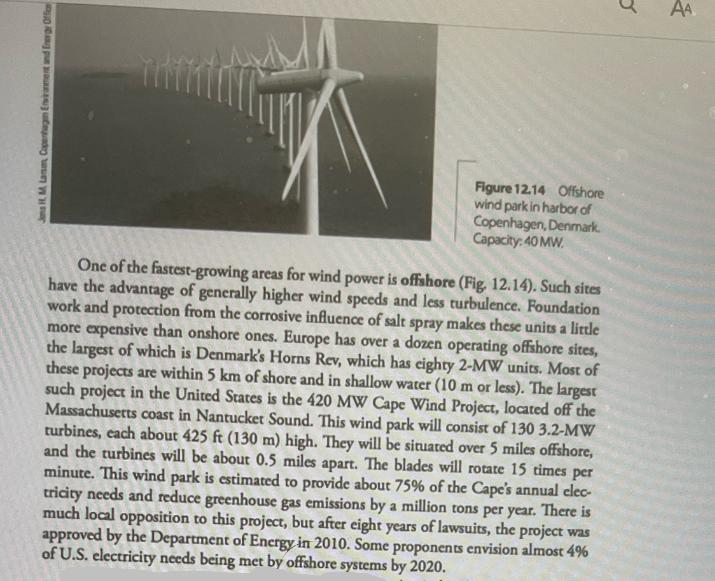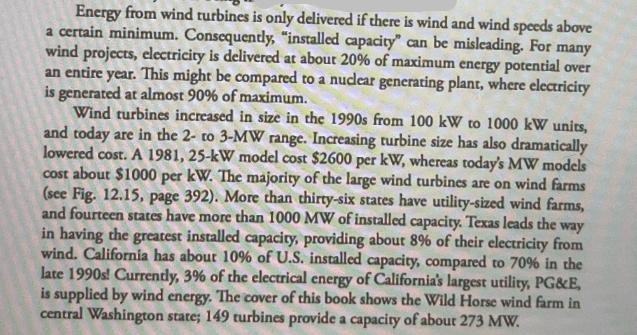Question
The picture mentions the the Cape Wind project in Nantucket Sound between Nantucket island, Martha's Vineyard, and Cape Cod. Although formally proposed in 2001, this
The picture mentions the the Cape Wind project in Nantucket Sound between Nantucket island, Martha's Vineyard, and Cape Cod. Although formally proposed in 2001, this project has been abandoned. Despite being approved and clearing many legal hurdles, construction of the project has been canceled. Although a majority of Massachusetts residents supported the project, opponents mounted intense opposition including numerous legal challenges and attempts to designate Nantucket Sound a national marine sanctuary and a national historic place.


Jens H. M Lanan, Copenhagin Envirament and Energy Offic Figure 12.14 Offshore wind park in harbor of Copenhagen, Denmark. Capacity: 40 MW. One of the fastest-growing areas for wind power is offshore (Fig. 12.14). Such sites have the advantage of generally higher wind speeds and less turbulence. Foundation work and protection from the corrosive influence of salt spray makes these units a little more expensive than onshore ones. Europe has over a dozen operating offshore sites, the largest of which is Denmark's Horns Rev, which has eighty 2-MW units. Most of these projects are within 5 km of shore and in shallow water (10 m or less). The largest such project in the United States is the 420 MW Cape Wind Project, located off the Massachusetts coast in Nantucket Sound. This wind park will consist of 130 3.2-MW turbines, each about 425 ft (130 m) high. They will be situated over 5 miles offshore, and the turbines will be about 0.5 miles apart. The blades will rotate 15 times per minute. This wind park is estimated to provide about 75% of the Cape's annual elec- tricity needs and reduce greenhouse gas emissions by a million tons per year. There is much local opposition to this project, but after eight years of lawsuits, the project was approved by the Department of Energy in 2010. Some proponents envision almost 4% of U.S. electricity needs being met by offshore systems by 2020. AA
Step by Step Solution
3.49 Rating (152 Votes )
There are 3 Steps involved in it
Step: 1
Here is a summary and analysis of the key arguments made by supporters and opponents of the Cape Wind project in Nantucket Sound Supporters Arguments ...
Get Instant Access to Expert-Tailored Solutions
See step-by-step solutions with expert insights and AI powered tools for academic success
Step: 2

Step: 3

Ace Your Homework with AI
Get the answers you need in no time with our AI-driven, step-by-step assistance
Get Started


